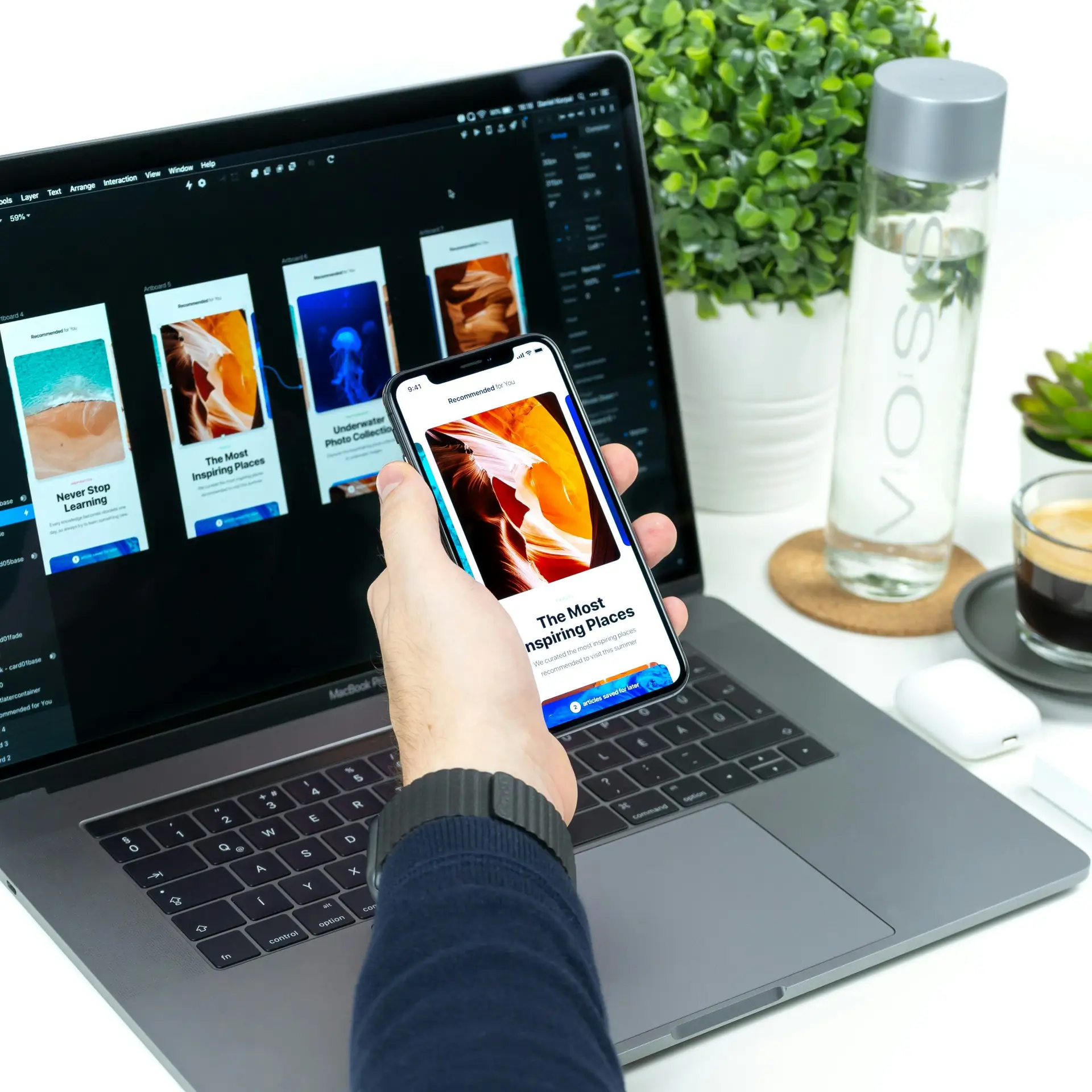
For decades, the paradigm of UI/UX has been built on a foundation of staticity. We designed fixed screens—a dashboard, a settings menu, a product page—that users navigated. Personalization meant showing or hiding pre-built components. But the latest technological shifts are tearing down this rigid model, ushering in an era where the interface itself is a living, breathing entity that adapts, morphs, and even generates itself in real-time to fit a user’s moment, mood, and context.
The cutting edge of UI/UX is no longer about perfecting a static layout; it’s about designing the **rules and artificial intelligence** that govern a dynamic, context-aware experience.
1. The Generative UI: Interfaces Built on the Fly
Inspired by the capabilities of large language models, Generative UI is the concept of a user interface that assembles itself in real-time based on the specific task at hand. Instead of a developer hand-coding every possible state, the UI is generated from a data payload and a set of design principles.
**How it’s materializing:**
* **AI-Native Apps:** Imagine a project management tool where, instead of a pre-defined form, you tell an AI: “Set up a new product launch for Q4 with a budget of $50k.” The AI doesn’t just create a task; it *generates* the entire project structure—a Gantt chart, a budget tracker, a list of relevant documents, and a stakeholder contact list—as a unique, temporary interface for that specific project. The components are familiar (cards, lists, inputs), but their assembly is novel and bespoke.
* **Dynamic Forms:** A customer support form that changes its questions based on your previous answers. If you report a “shipping issue,” it generates fields for a tracking number. If you then say the “package was delivered but is damaged,” it dynamically generates an option to upload photos. The form isn’t navigating through pre-built steps; it’s *building the next step* based on a live understanding of your problem.
2. The Invisible HUD: Spatial and Ambient UX
With the impending arrival of consumer-grade AR glasses (like Apple’s Vision Pro and beyond), the very canvas of UI/UX is expanding from the 2D screen into the 3D space around us. The latest challenge is designing for “Ambient UX“—interfaces that exist in your environment without a traditional screen.
**How it’s materializing:**
* **Spatial Anchoring:** Digital objects—a weather widget on your wall, a virtual instruction manual hovering over your broken appliance—persist in physical space. The UX challenge shifts from “where to place a button” to “how to make a digital object feel naturally and unobtrusively part of a user’s world.”
* **Glanceable and Zero-UI Interactions:** The goal is to provide information and functionality without demanding full attention. A notification isn’t a banner you tap; it’s a subtle, haptic pulse and a small, translucent icon in your periphery. Interaction happens through gaze, gesture, and voice, moving us toward a “Zero-UI” world where the interface recedes, and the outcome takes center stage.
3. The Emotional Layer: Affective Computing and Biometric Feedback
The most profound shift is the move toward interfaces that can *see* and *feel* you. Using device sensors (cameras, microphones) and wearable data, “Affective Computing” allows interfaces to respond to a user’s emotional and physiological state.
**How it’s materializing:**
* **Adaptive Difficulty & Pacing:** A fitness app that uses your phone’s camera (with consent) to detect signs of fatigue or strain and suggests lowering the workout intensity. A learning platform that notices your confusion (via facial expression or prolonged inactivity) and proactively offers to re-explain a concept in a different way.
* **Biometric Personalization:** A music streaming app that generates a playlist not just based on your listening history, but on your current heart rate from your smartwatch, creating a calming soundtrack when you’re stressed or an energizing one when you’re sluggish. The UI itself might shift its color palette and motion to complement this state.
4. The New UX Skillset: From Pixel-Pusher to System Designer
This evolution demands a radical shift in the UX professional’s role. The skills of the future are less about crafting the perfect pixel and more about:
* **Designing Systems & Rules:** Creating the foundational logic, component libraries, and AI prompt structures that allow for healthy, on-brand generative outcomes.
* **Ethics and Transparency:** Navigating the immense privacy concerns of biometric data and ensuring users understand and consent to how adaptive interfaces work.
* **Prototyping in 4D:** Using new tools to prototype not just for a screen, but for time, space, and context.
The static screen is becoming a relic. The new frontier of UI/UX is a responsive, empathetic, and sometimes even invisible layer between humans and technology, promising a future where our tools don’t just wait for our commands—they understand our context and anticipate our needs.